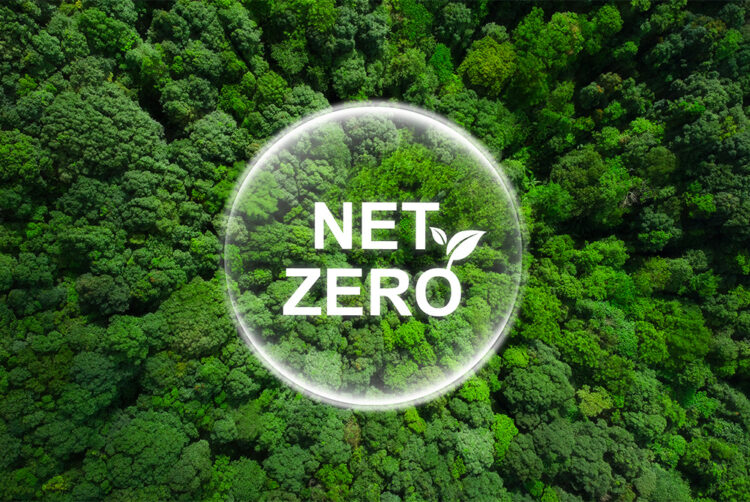Yes, you can reduce carbon in ads without affecting cost or performance

Opinion
Good-Loop’s head of investment and sustainable media makes the case for how brands can cut carbon emissions from ad campaigns without affecting cost or performance.
Private jets, cars, cow farts — we all know the things that are really bad for the planet. And then there’s digital advertising. A recent report from Purpose Disruptors suggests advertising adds an extra 32% to the annual carbon footprint of every person in the UK, with a hefty chunk coming from the significant computational power required to power online ad campaigns.
It means a typical ad campaign emits around 5.4 tonnes of carbon dioxide — more than half what an average UK consumer produces in a year.
In the absence of truly renewable energy grids, many are turning to carbon offsetting — by investing in sustainable initiatives, advertisers can mitigate what they can’t remove. But they are only a short-term solution — you can’t burn now, pay later. Plus, with their efficacy coming under real scrutiny of late, it’s crucial brands invest in quality projects.
Fundamentally, the only way forward is reduction, with brands making daily changes to the way they create, buy, plan and distribute media to reduce emissions.
Here’s what we’re doing right now to address the digital ad industry’s oversized carbon footprint.
We recently conducted a test for a global auto brand to see if we could radically reduce the carbon load of its digital ad campaigns — without any impact on campaign cost or performance. Changes invisible to consumers, but felt by the planet. The aim was to identify the small, actionable changes that could have the biggest positive impact.
Changes invisible to consumers, but felt by the planet
It followed months of analysis of hundreds of ad tags using our Green Ad Tag solution — which enables advertisers to measure and reduce the emissions generated by their digital ads.
Looking through the data, we spotted various trends, which inspired us to run an A/B test to evaluate the impact making invisible changes to the campaign creative and distribution would have on emissions. One ad set would run unchanged — the second optimised to reduce emissions. We would then measure the emissions using our Green Dashboard.
The results
The results were really encouraging. Without impacting the creative execution, targeting, cost or ad performance, our optimisations delivered an average reduction in emissions of 41%. In fact, some ads were reduced by as much as 72% (71.7%).
So how did we do it? Well, using data collected from the A/B test, here are some suggestions on how advertisers can make similar savings.
Make changes to your file asset
One of the biggest things you can do to significantly reduce the number of emissions your digital ads generate is to make a series of tweaks to your creative asset.
For example, the changes we made to the file asset of our autos campaign included consolidating script files, compressing fonts, swapping to a more lightweight Javascript animation library and using content delivery networks to optimise creative load.
Filter out carbon-intensive publishers
Where an ad is displayed can contribute significantly to a digital campaign’s overall carbon footprint, with the number of emissions generated varying dramatically from website to website. So by filtering out publishers that are more carbon-intensive, advertisers can drastically reduce the emissions generated by their online campaigns.
To help with this, we’re launching a tool that enables brands and agencies to set their own targets based on the amount of CO2e each media owner generates per ad impression — and block any publishers that fall short. It also analyses the number of emissions an advertiser would save based on the threshold set by the advertiser.
Slice through the ad-tech layers
There’s no doubt the way ad campaigns are bought, sold and tracked within the vast programmatic ecosystem also has a huge impact on adland’s carbon footprint.
An ad campaign’s journey is circuitous and convoluted. The explosion of intermediaries over the past decade has resulted in a heap of negative outcomes, with a proliferation of third parties all taking a nibble along the way, resulting in data and ad spend leaking out of the ecosystem not to mention carbon, owing to the huge amount of computational power required for each hop in the chain.
Data from our Green media technology found on average the various campaign ad layers — including SSP/ DSP calls, ad auction mechanics, and everything in-between — can add up to 0.12kg of carbon per thousand impressions.
So focusing on more direct methods of buying, such as programmatic guaranteed, can have a real impact on an ad’s carbon cost — it’s better for publishers too.
Put your attention on attention
Splashing your media budgets on websites that have low attention scores is not only a waste of money — but it’s also bad for the planet. The carbon cost of serving your ad is still the same, regardless of whether anyone actually saw the ad or not.
Recent research from Playground XYZ found that if advertisers were to cut their ads from domains where people only paid attention for less than 0.5 seconds, they could reduce their emissions by 63% on average, while also boosting their attention time by 40%.
So by ensuring your campaigns only target websites with high attention rates, you limit wasting your budget on ads that are never seen — and most likely, deliver a better ad campaign at the same time.
This campaign has created a simple template for advertisers to take action and create lasting, scalable change right now, addressing Adland’s impact on the climate crisis.
Now we’ve proven it’s possible – we’re sharing the learnings so we can accelerate the industry’s progress to net zero.
Claire Gleeson-Landry is head of investment and sustainable media at Good-Loop




